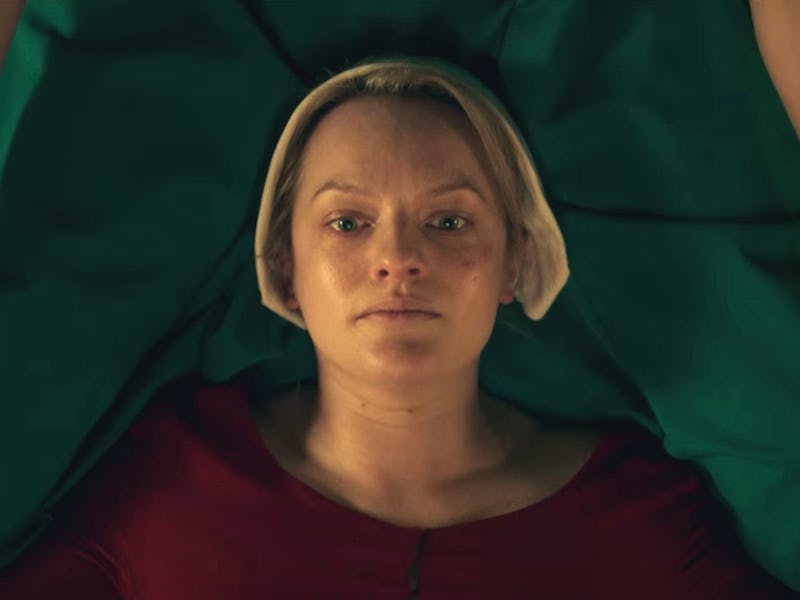Why Serena Holds Offred Down in 'The Handmaids Tale' Sex Scene
What the ritualistic sex Ceremony is really saying in 'The Handmaid's Tale.'

Hulu’s new adaptation of Margaret Atwood’s The Handmaid’s Tale features one of the most bizarre sex scenes on television. It’s not a multi-location orgy like in Sense8. It involves no kinky golden showers like in Billions. There’s no incest, like Game of Thrones. And there’s no bodily acrobatics, which we saw in True Blood. It’s comparably conservative, featuring no actual nudity, and yet, it’s harrowing.
In the scene, Fred Waterford, otherwise known as “The Commander” (Joseph Fiennes), has sex with Elizabeth Moss’s character Offred while she lies in his wife Serena Joy’s lap. Serena (Yvonne Strahovski) holds Offred down onto the bed, her fingers leaving marks on Offred’s wrists. Everyone wears mannequin-blank expressions and nobody makes eye contact. When the Commander is finished, he leaves, and his wife tells Offred to get out.
The entire scene is captured with tight, claustrophobic shots: Offred’s tense blank face, the Commander’s hand gripping the bed post, his wife Serena’s hands around Offred’s wrists like human shackles. It’s the last image that speaks the most about this world.
If it’s been a while since you read the book, you might have wondered what the hell was going on. This monthly ritual is referred to as “The Ceremony.” It’s sanctioned rape cloaked in the veneer of piousness and righteousness. In other words, although its looks strange on camera, it’s steeped in real-world traditions that have been around as long as humans have been. Margaret Atwood, after all, got every element of her story from the real world.
This particular practice was influenced by the Bible. Before each Ceremony, the Commander reads a verse (Genesis 30:4) about Rachel being unable to bear Jacob children. “And she gave him Bilhah her handmaid to wife,” he reads. “And Jacob went unto her.” The scene cuts to him having sex with Offred the Handmaid — going “unto” her — in hopes that he’ll impregnate her. In the event that he does, after she gives birth, the Commander and Serena will keep the baby as their own. Offred will move on to another home with a new Commander and Wife.
In the dystopian world of Gilead — which is the new version of America emphasizing a return to “traditional” values — women aren’t allowed to read or own property, and their societal function is entirely dictated by their usefulness to men. Because there’s an infertility epidemic, fertile women are Handmaids, which are glorified walking wombs. Wealthy infertile women are Wives.
Crucially, as the story unfolds, it becomes clear that Serena played a key role in installing this new regime. But as the Ceremony proceeds, accompanied by language linking the Wives to Handmaids — “the two of you shall become one flesh” — it’s clear that in this jarring sex scene, Offred and Serena are anything but linked.
When Serena holds Offred down, it’s a simultaneous act of aggression and compliance. She’s fanatical enough to believe the tenants of this world and yet she’s smart enough to know that “becoming one flesh” with Offred isn’t possible. Beneath her cold and pious facade, she’s hurt and humiliated that her husband is having sex with another woman. And yet, instead of blaming her husband or herself — instead of trying to fix this world she helped create that didn’t turn out quite how she anticipated — she follows its rules and uses Offred as a sponge for her aggression.
Serena Joy’s culpability in Offred’s rape perfectly exemplifies The Handmaid’s Tale’s commentary not just on feminism as a broad definition, but on how the patriarchy breeds internalized misogyny in men and women alike. Men are hardly the sole perpetrators of toxic ideas.
The Handmaid’s Tale is currently airing on Hulu.